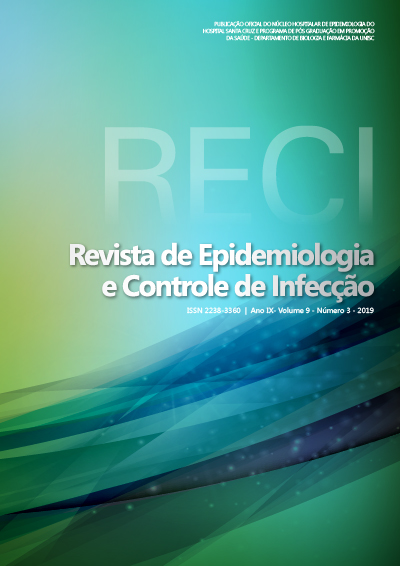Pap smear: comparison of risk and protective factors related to sociodemographic and health variables by telephone-based surveillance
DOI:
https://doi.org/10.17058/reci.v9i3.12793Keywords:
Papanicolaou Test. Women’s Health. Epidemiology.Abstract
Background and objectives: Human Papilloma Virus is related to the incidence of cervical cancer. The preventive exam aims to detect early the lesions caused by subtypes of the virus, reducing the cancer incidence. Considering the limitations of the health service and the sociodemographic variables of the population of the South of Brazil, it is important to verify the risk factors and the protection of the female population. The objective is to verify risk and protection factors for Pap smears in the capitals of southern Brazil. Methods: Data from telephone-based surveillance answered by women from the capitals Florianópolis, Curitiba and Porto Alegre were used. The study analyzed data relating to the accomplishment of Pap smear, crossed with schooling, systemic arterial hypertension, marital status, pregnancy, health condition, mammography, diabetes mellitus and health plan. Descriptive statistical analyzes were performed. According to article 1 of the brazilian Resolution of the National Health Council 510/2016, this research exempts the ethics committee. Results: It was observed that having a health plan, having a mammogram, being 35-64 years and being legally married are protective factors for the preventive exam. While physical inactivity is a risk factor. The Pap smear is most prevalent among women with high levels of education. Conclusion: The Pap smear protective factors are: being legally married, in stable marriage for more than 6 months, separated, divorced, practicing physical activity, being between 35-64 years old and having dyslipidemia. The risk factors are: being 25-34 years old, not having a health insurance, being physically inactive and to have never had a mammogram.Downloads
Published
How to Cite
Issue
Section
License
The author must state that the paper is original (has not been published previously), not infringing any copyright or other ownership right involving third parties. Once the paper is submitted, the Journal reserves the right to make normative changes, such as spelling and grammar, in order to maintain the language standard, but respecting the author’s style. The published papers become ownership of RECI, considering that all the opinions expressed by the authors are their responsibility. Because we are an open access journal, we allow free use of articles in educational and scientific applications provided the source is cited under the Creative Commons CC-BY license.


